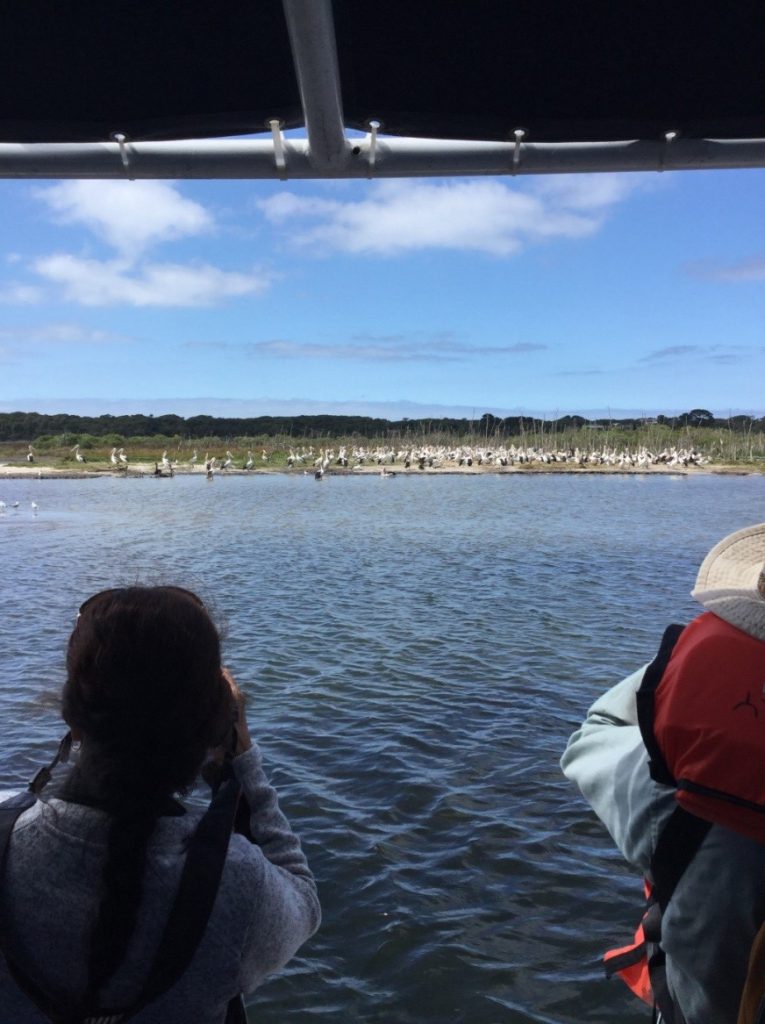Adj. Prof. Peter M J Fisher, School of Architecture & Built Environment,
Deakin University, Geelong, Australia.

Figure 1: How do birds know? Australian Pelicans somehow or other get the message that fish are to be got thousands of kilometres away in Lake Eyre when it spasmodically fills, and migrate there in vast numbers on such occasions? (Picture: Author, Australia’s largest breeding colony of Pelicans on Crescent Island, a drought refuge in the Ramsar Gippsland Lakes)
The IPCC’s Special report on global warming of 1.5°C invites serious consideration of the permanency of bird immigration as we now know it… . What impact might destabilisation of the world’s climate have on breeding, transit, and over-wintering sites? And, what are the repercussions accompanying warming oceans for eddies, jetstreams, prevailing winds, etc. which aid if not make possible, such immigration? Further, what are the implications of the meshing of development with climate change – a pernicious disruptor – explored by the winners of the 2018 Nobel Prize for Economics?
Australia, as a no-go destination??
To get a feel for the impact of a changing climate on bird immigration step back into a paleo Australia and its recurrent flux between dry and wet. In her book After the greening, paleontologist Mary White attested that at the last ….glacial peak 15,000-18,000 years ago 2/3 of the continent was wind-blown sand and trees were absent from all but 15 per cent of the land mass. At this time, Victoria’s Western District, now an important destination of the Japanese Snipe, was completely devoid of surface water (Peter Gell, personal communication). Hardly a pull factor for a marathon skyward trek southwards!

Figure 2: Longevity of learnt behaviour? Blue Fin Tuna still use the long route to spawn on Australia’s east coast after a shorter one opened up through Bass Strait in the Holocene.
Migratory factors: Lots of unknowns?
The traditional view has it that species’ immigration is instinctive. However new research suggests that knowledge and lessons (Figure 1) may be passed from generation to generation. Such tutorials in wild populations may from time to time, be in need of revision as exemplified by Southern Blue Fin Tuna, Figure 2
Looking ahead
There is clearly much uncertainty such as the expected frequency of extreme weather events, Figure 3, requiring identification to assist ‘Flyway partners curate adaptive responses!

Figure 3: How might more frequent extreme weather events like tropical storm Choi-wan, affect immigration behavior?




